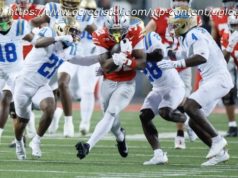The new class was chosen from a record-breaking applicant pool of more than 18,300 people, which is almost 3 times more than the 2013 class, reported NASA.
NASA officially announced their highly anticipated 2017 astronaut class Wednesday.
The agency broadcasted the ceremony live on NASA Television and their website from the Johnson Space Center in Houston, Texas on Wednesday afternoon.
The new class was chosen from a record-breaking applicant pool of more than 18,300 people, which is almost three times more than the 2013 class, NASA reported.
“It’s not at all surprising to me that so many Americans form diverse background want to personally contribute to blazing the train on our journey to Mars, ” said NASA administrator and former astronaut Charlie Bolden.
Over the course of an 18-month process, NASA reviewed each of the highly qualified applicants and through a series of medical test screenings and vigorous interviews, the agency selected the final candidates.
The class roster comprises 12 new astronauts; Kayla Barron, Zena Cardman, Raja Chari, Matthew Dominick, Bob Hines, Warren Hoburg, Jonny Kim, Robb Kulin, Jasmin Moghbeli, Loral O’ Hara, Frank Rubio, and Jessica Watkins.
“You represent the pinnacle of American excellence, ” Robert Lightfoot, acting NASA Administrator, said at the ceremony, “you are inspiring to all of us.”
Vice President Mike Pence also spoke at the ceremony to congratulate the candidates. He reaffirmed President Trump’s full support of NASA’s “mission of exploration and discovery.” Pence also announced that he would chair the reinstated National Space Council (NSC) in Washington D. C.
The class will immediately move to Houston to undergo two years of intensive training, which includes practicing space walks in Johnson’s 60-foot deep swimming pool, mastering the space station system, flying NASA’s fleet of T-38s, learning Russian, and advancing their expeditionary skills.
After training, they will be promoted to full astronauts and are given the chance to perform research on the International Space Station and go on space flight missions, which may include expeditions beyond just the moon and into deep space on NASA’s Orion spacecraft. Meanwhile, they will be given technical positions at Johnson Space Center before assigned to any of their spacecrafts.





